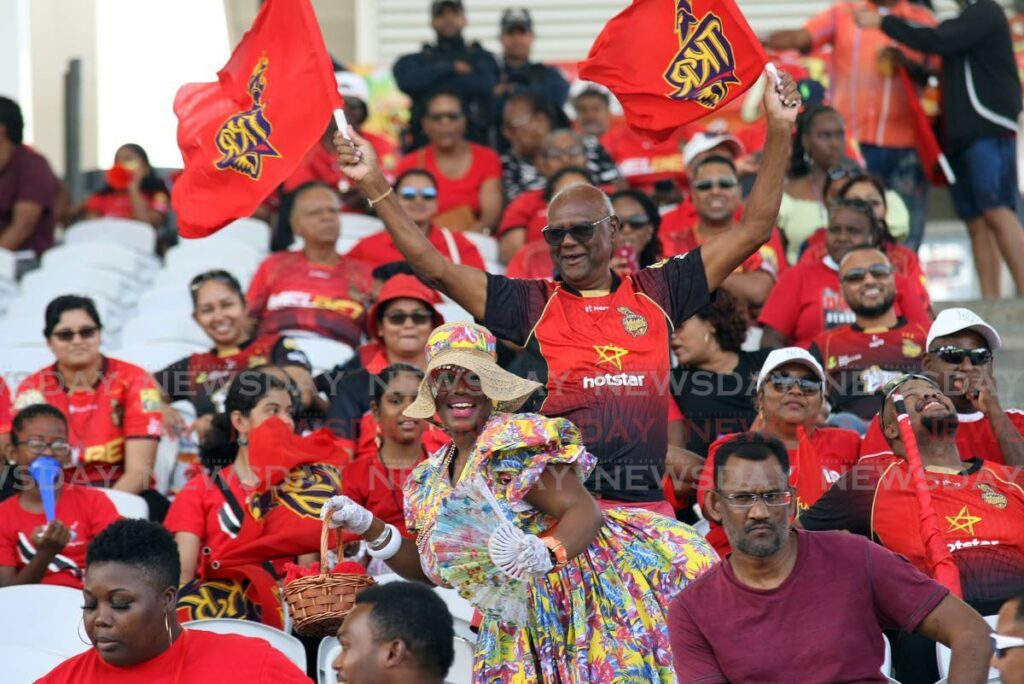Beauty and the beast of sport rivalries

SPORT has been part of society for thousands of years.
In the modern world, organised sport has been commercialised and packaged, catering to ticket-holders on match days, and to a television audience. The latter is arguably the more lucrative, as sports fans today have to pay cable providers extra to watch their favourite teams on specific channels.
So sport has become a billion-dollar business played out before audiences whose numbers were previously unimaginable. In some disciplines, athletes at the top of their game can become millionaires or even billionaires.
This revenue comes directly from the pockets of fans – the paying customer. It is these fans who buy jerseys and memorabilia, pay for season tickets and subscription fees. Their unconditional support fuels the business of sport and allows clubs and teams to flourish.
Over time, rivalries among teams develop, for geographical, political or historical reasons, and these “grudge matches” are often also commercialised. The El Clásico between Barcelona and Real Madrid, the Superclásico between Boca Juniors and River Plate, are known worldwide. But without the fans, these matches would essentially become “a sweat” among skilful players.
The passion that fans display during these live games creates an electric atmosphere that is often described in cricket and football – 11-a-side contests – as “the 12th man.”
However, this 12th man, in his effort to be the best fan, sometimes crosses the boundary into fanaticism and damages both the reputation and the spectacle of the sport.
The Republic Bank Caribbean Premier League (CPL) is still in its infancy, with just 11 years of existence, but has already developed a healthy rivalry. Each year, the debate rages between Trinbago Knight Riders (TKR) fans and their Guyana Amazon Warriors counterparts over whether chicken curry or curry chicken will prevail.
So far, on the pitch, curry chicken seems to be ahead, with TKR winning four CPL titles, while Guyana’s chicken is yet to scratch, having lost five finals.
The intense rivalry can be traced back to 2018, when an overzealous Guyanese woman stomped on the TT flag during their team’s emphatic six-wicket victory over TKR during a game at Providence Stadium, Guyana. TKR got their revenge in the final in Trinidad, beating the Warriors by eight wickets – but then captain Dwayne Bravo showed he had not forgotten what had happened earlier.
During his victory speech he said, “I just have one message for Guyana: put some respect on our national flag – red, white and black. It means a lot to us. To my team, well done – this victory is for TT.”
With an ethnic composition of people mostly of African and East Indian descent, the two countries share many similarities, and their people have mingled freely. In the past, Guyanese people have migrated to Trinidad in search of economic opportunities. With Guyana now enjoying an economic boom thanks to the discovery of oil and natural gas, Trinidadians are now looking to Guyana for similar opportunities, and some Guyanese people are returning home.
Apart from the cricket rivalry and sometimes words thrown by members of their respective governments, the two countries share a cordial relationship.
On the cricket pitch, for the most part, the contest between TKR and Warriors has been a healthy one and made their match-ups a sporting spectacle. Any negative energy displayed on the field does not linger off it, as most of the opposing players are friends.
On Saturday, Guyana defeated TKR by six wickets at Providence Stadium and TKR captain Kieron Pollard, who's often been the object of jeers from the Guyanese crowd, received similar treatment when fielding on the boundary. Pollard took it in stride, pretending he was the conductor of an orchestra as he turned to face the partisan crowd.
In sport, part of the game is fan engagement and fans are allowed to boo opposing players.
It is only when these boos are racially motivated, taunts are nasty, or homophobic slurs are involved – as in the case of Real Madrid’s Vinicius Jr in Spain, or even the Soca Warriors during their 2021 Concacaf Gold Cup match versus Mexico in Texas – that there is serious cause for concern.
Sport, although a great unifier, ironically also encourages rivalries, but this should not be discouraged. However, officials must be cognisant that it takes just one fan to instigate mayhem, and should put things in place to ensure unexpected, unwelcome incidents are limited and do not spiral out of control.
To take an instance from basketball, the November 19, 2004 “Malice in the Palace,” when a brawl broke out between Detroit Pistons fans, Pistons players and Indiana Pacers players at The Palace in Auburn Hills, Michigan is a perfect example of how one fan throwing a drink at a player can trigger chaos.
The CPL – one of whose slogans is “The Biggest Party in Sport” – has not had to deal with issues like these, as Caribbean sporting fans are generally well behaved. But it sometimes takes just one bad shot to end a perfect knock.


Comments
"Beauty and the beast of sport rivalries"